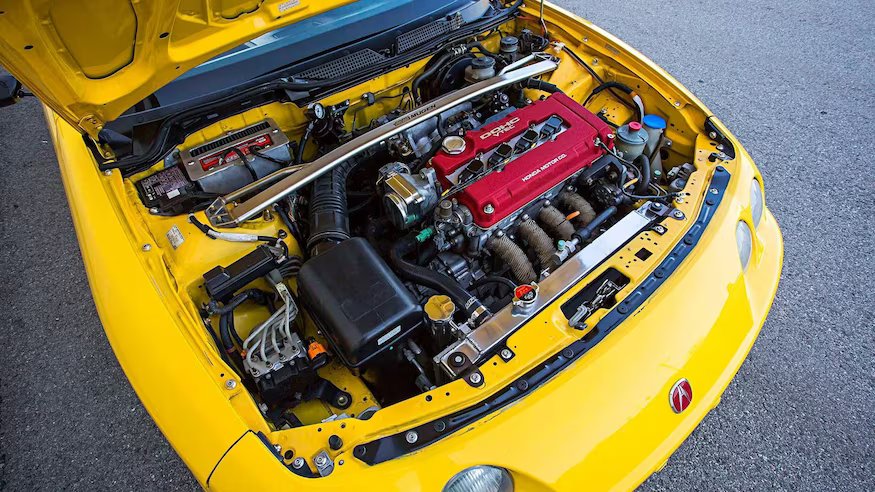Consider creating a hall of fame for engines that have been tuned the most. Six-cylinders like Toyota’s Supra-lative 2JZ-GTE and Nissan’s Godzillic RB26DETT, as well as Chevy’s old-school-meets-new-school LS V-8, immediately come to mind as first-ballot inductees.
There’s also a four-cylinder superstar who is a lock for the hall. It’s known as the Honda K24, and it’s one of the most amazing and frequently tweaked production engines in automotive history.
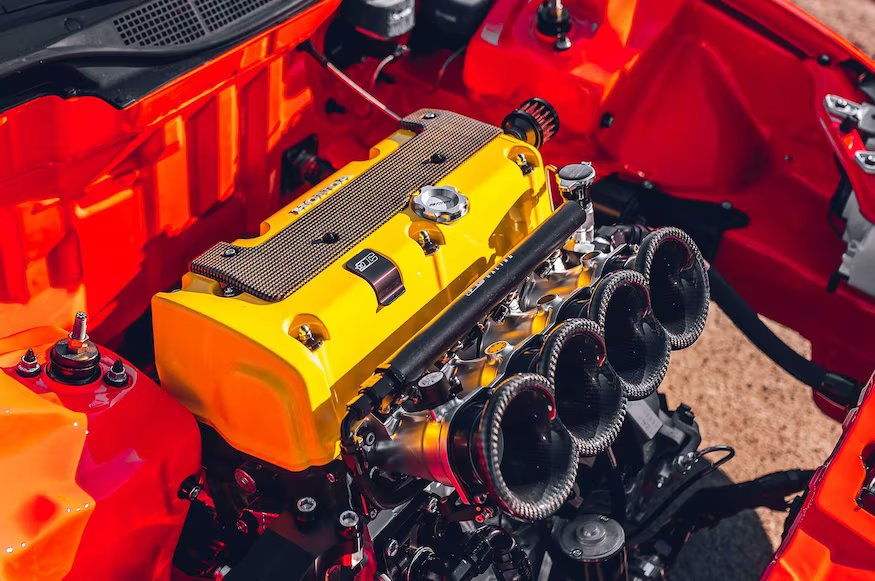
The K24 was not the first Honda engine to pique the interest of the JDM tuning community. Its late 1980s B-Series range validated Honda’s credentials with engines like the B16A3, which powered the fun-in-the-sun Civic Del Sol and delivered up to 100 horsepower per liter.
The K24, on the other hand, outperformed the B-Series in practically every regard.
Honda has also continued to improve the K24. It’s been updated numerous times over the last two decades, resulting in a whopping 18 variations as of this writing.
Aside from the B-Series, the K24 engine family is perhaps Honda’s best and most flexible engine family. The following is an exhaustive summary of all you need to know about Honda’s incredible hall of fame, the K24 engine.
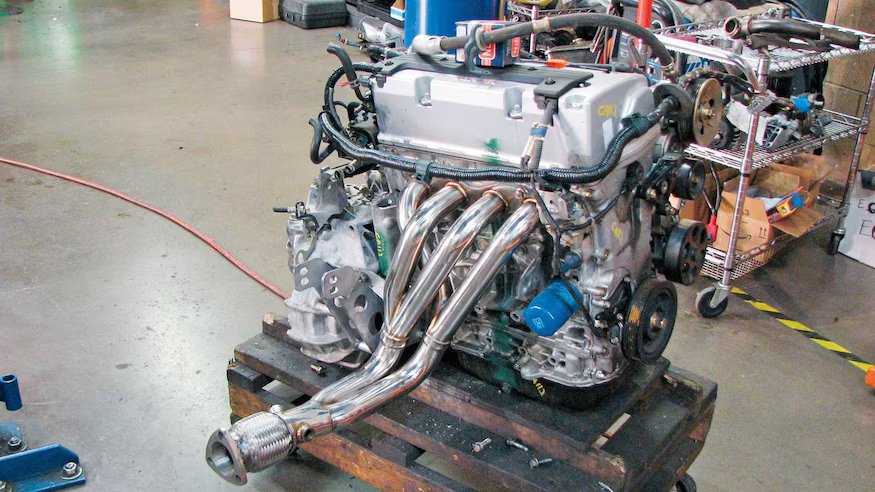
The following is a list of all the vehicles in the United States that have been equipped with a K24 engine:
- K24A1: 2002-2009 Honda CR-V
- K24A2: 2004-2008 Acura TSX
- K24A4: 2003-2005 Honda Accord, 2003-2008 Honda Odyssey, 2003-2006 Honda Element
- K24A8: 2006-2007 Honda Accord, 2007-2011 Honda Element
- K24W (Earth Dreams): 2013-2017 Honda Accord, 2015-2019 Honda CR-V
- K24V7: 2016-present Acura ILX
- K24W7: 2015-2020 Acura TLX
- K24Y2: 2012-2015 Honda Crosstour
- K24Z1: 2007-2009 Honda CR-V
- K24Z2: 2008-2012 Honda Accord LX/LX-P
- K24Z3: 2008-2012 Honda Accord LX-S/EX/EX-L, 2009-2014 Acura TSX, 2008-2012 Honda Accord
- K24Z4: 2008-2012 Honda CR-V
- K24Z6: 2010-2014 Honda CR-V
- K24Z7: 2012-2015 Honda Civic Si, 2013-2015 Acura ILX
How many horses does the stock K24 engine produce?
The K24 has gone through several variations over the past two decades, demonstrating that with the correct mods, it is capable of insane power. However, in stock form, the K24W7 produced 206 horsepower at 6,800 rpm and 182 lb-ft of torque at 4,500 rpm in the 2015-2020 Acura TLX.

The 2014-2015 Honda Civic Si comes in second with its K24Z7, which produced 205 hp and 174 lb-ft of torque, while the 2006-08 Acura TSX takes third with its K24A2, which produced 205 hp at 7,000 rpm but just 164 lb-ft of torque at 4,500 rpm.
Finally, the 2013-15 Acura ILX receives an honorable mention, using the same K24Z7 as the 2012-15 Civic Si but producing only 201 horsepower at 7,000 rpm and 170 pound-feet of torque.
Even with its stock internals, the K24 can support a turbo or supercharger without extensive bottom-end modification. A turbocharged K24 can produce up to 400-500 horsepower in stock form. Beyond 500 horsepower, it would be in the engine’s best interest to replace some of the K24’s internals with more substantial and race-oriented components.
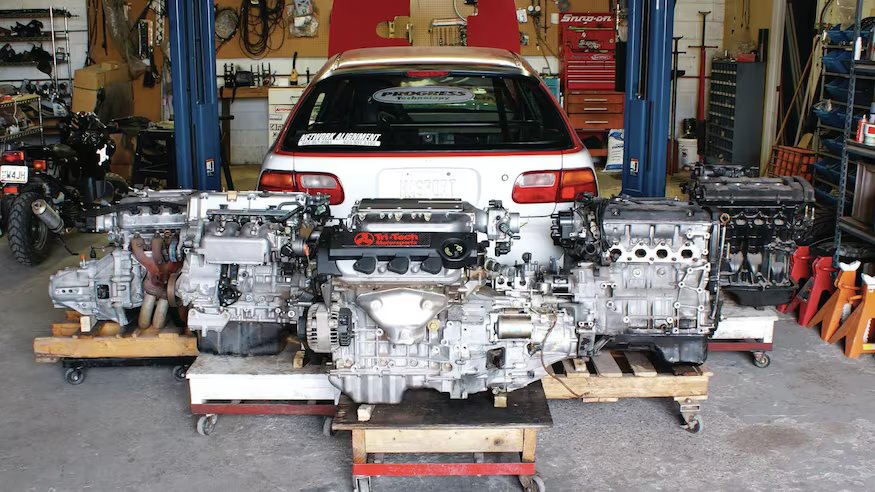
Increasing the K24’s power to over 500 hp will have an impact on various other factors that should be considered. Most of the time, the manual or automatic transmission must be beefed up or replaced with a more powerful unit. The second issue would be getting all that power to the ground, which would necessitate a number of suspension changes to maximize traction.
A good investment will also be an aftermarket ECM to manage fuel distribution and help preserve a car that can be driven on a daily basis. When everything comes together just so, a turbo K24 can make something as fast as a Ferrari go much, much quicker.
The K20 debuted in 2001 and, as the name implies, is a 2.0-liter engine, whilst the K24 debuted a year later as a larger 2.4-liter engine. The greater displacement of the K24 is due to a higher deck height of 9.1 inches (231.5mm), whereas the deck height of the K20 is 8.3 inches (212mm).
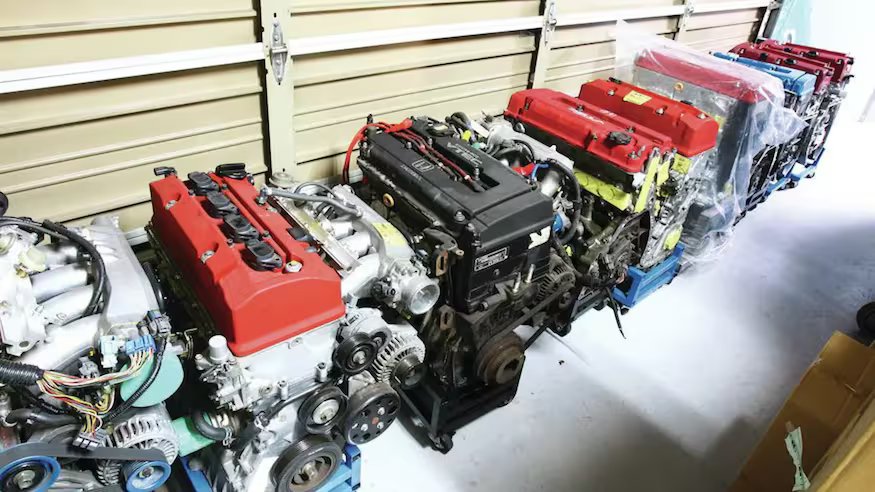
Because of the larger deck, the K24 has a longer 99mm stroke than the shorter 86mm of the K20. The bore and stroke lengths of the K20 are the same, allowing it to have a higher redline than the K24. However, the K24 has a larger bore than stroke, allowing it to produce greater torque at lower rpms.
At the risk of inciting a tuner civil war, the K-Series engine is objectively superior to its predecessor. There’s no denying the B-Series engine was responsible for kindling the late-’80s import hot rodding craze. The B16, which pioneered VTEC, matched that revolutionary technology with a lightweight aluminum block and an astounding 9,000-rpm redline. Although 2.0- and 2.1-liter B-Series engines (B20 and B21A, respectively) are available, they are not as popular as their smaller, more powerful brothers.

The K-Series, an improved version of the B-Series, provides what the B could not: size.
“There’s no replacement for displacement,” as the saying goes, and the greater K-Series 2.0- or 2.4-liter displacement difference is nearly hard for the B-Series to compensate for given equivalent modifications.
The bigger intake valves on the performance-oriented K-Series engines allow the K to breathe deeper and faster than the B. When combined with its roller rocker system, the K-Series engine makes a strong case for being the more advanced engine.

